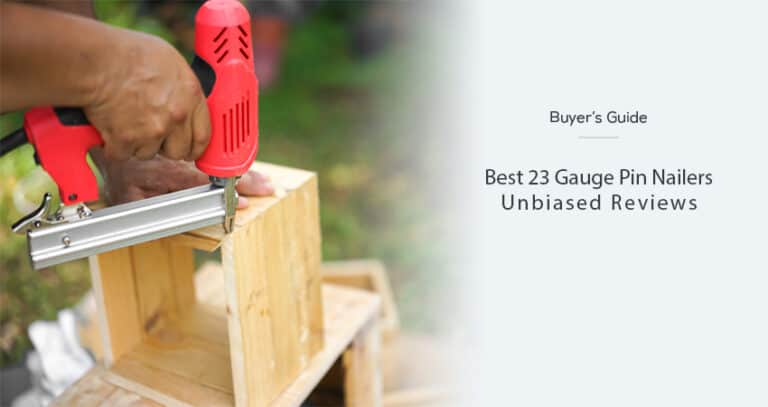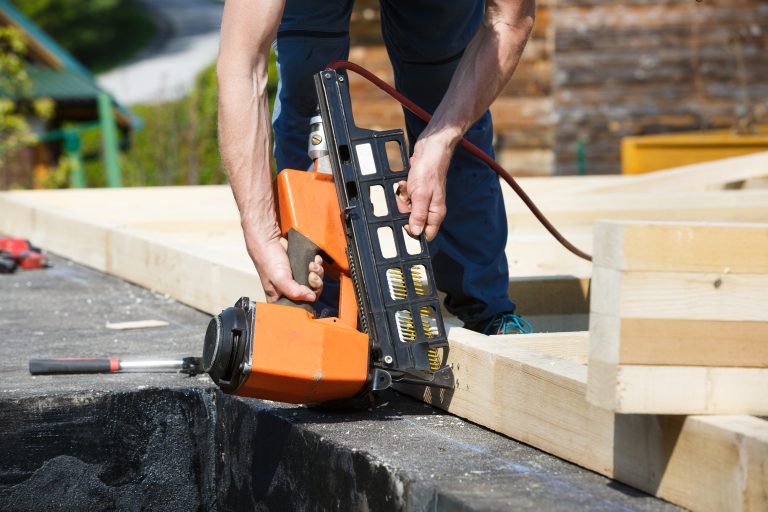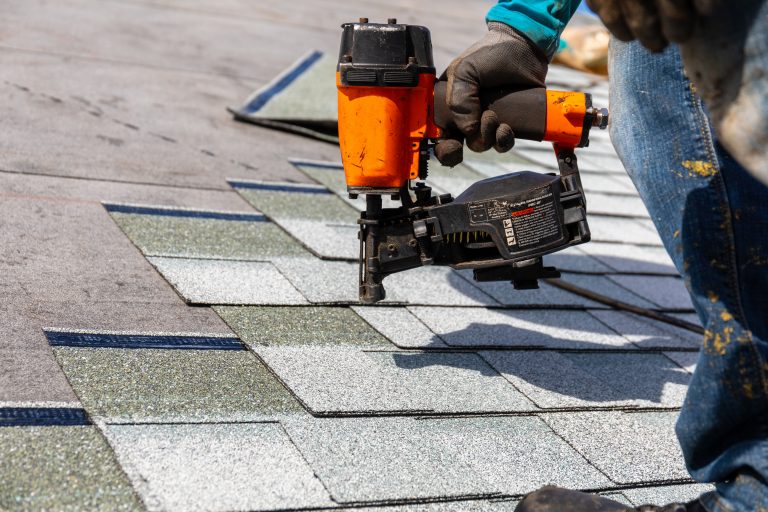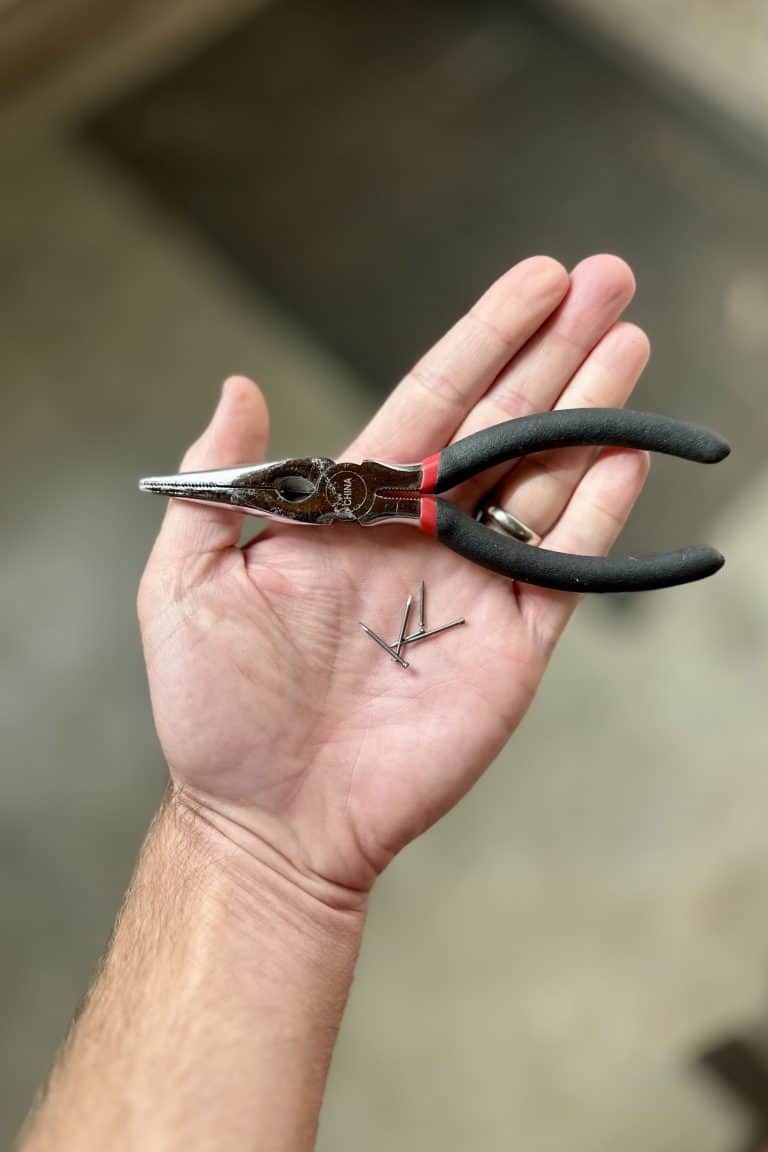Finish nailers are a versatile power tool used for finishing work, especially when installing baseboards, crown moldings, and trim. There are two main types of finish nailers: angled and straight variants. Despite this, many people are confused about how these tools differ and which they should use for finishing work.
Contents
Angled vs Straight Finish Nailer: Which Tool Should You Use?
Despite their similarities, many factors set angled and straight finish nailers apart. Understanding how these versatile power tools differ is key to choosing the correct finish nailer for your finishing work! From the design to the price, here’s everything you must know about how these tools compare!
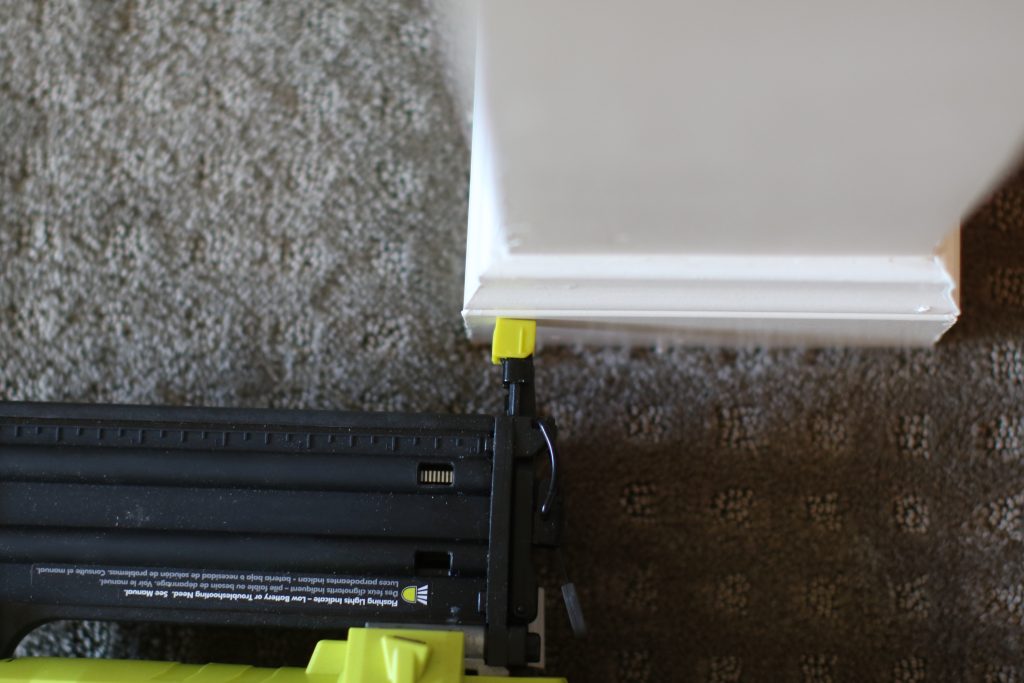
Angled vs Straight Finish Nailer: Design
Design is the main factor that distinguishes angled and straight finish nailers. A straight finish nailer is designed to be held in a vertical position, allowing you to apply force downwards onto your workpiece. Not only does this allow straight models to drive precise nails into finishing materials, but it makes it easier to use overall.
Angled finish nailers have a different design that allows you to hold it at a slight angle, which is generally between 15 and 45 degrees. The main benefit of this design is that it allows an angled finish nailer to be used in tight spaces, corners, and awkward angles without affecting the precision of the nails being driven.
Angled vs Straight Finish Nailer: Uses
While both types of finish nailer are used for finishing work, you’d use them for differing types of finishing work. Straight finish nailers are often used for long areas that require many small nails. Straight types can also be used for carpentry, framing, and general home repairs.
Angled finish nailers are ideal for tight spaces and corner spots. You can also nail slightly thicker finishing materials due to the larger size of the nails an angled finish nailer uses. The smaller size of this type means it’s more portable and can be used for contractor work. Angled models tend to have more versatile uses than their bulky straight counterparts.
Angled vs Straight Finish Nailer: Ease of Use
While both finish nailers allow for precise nailing when installing finishing materials, straight finish nailers are easier to use than angled finish nailers. The design of straight models means they’re easier to use with high accuracy.
While many people find angled finish nailers easier to hold due to the lightweight, ergonomic design, it can be difficult to get the angle of the nail right. Due to this, angled models require some more skill to be used correctly and ensure your finishing work looks professional.
Angled vs Straight Finish Nailer: Weight
Angled finish nailers have a more compact design to support using this nailer in tight spaces and corners. Due to this, angled models tend to be more lightweight than straight variants. For many users, the weight difference makes angled models easier to use for long periods, despite needing to use the tool at angles. Straight models are generally bulkier and heavier.
Angled vs Straight Finish Nailer: Power Source
Angled and straight finish nailers use the same power sources. Both nailer types tend to be pneumatic models powered by compressed air, which is supplied to the nailer via an air hose connected to the air compressor. However, cordless electric versions are available for both types, which are battery-powered and don’t rely on compressed air.
Angled vs Straight Finish Nailer: Nails
Angled and straight finish nailers tend to use slightly different nail sizes. Most angled finish nails are 15 gauge, while straight finish nails are 16 gauge, which means straight finish nails are slightly larger. While neither type of finish nail has a large nail head, angled finish nails tend to have round heads, while straight finish nails have rectangular heads.
Angled vs Straight Finish Nailer: Nail Depth
Most angled and straight finish nailers allow you to adjust the nail depth, giving you expert control over how far the nail is driven into your material. By setting the finish nailer to your desired depth, you can ensure your nails are properly driven into wooden materials and have a professional appearance.
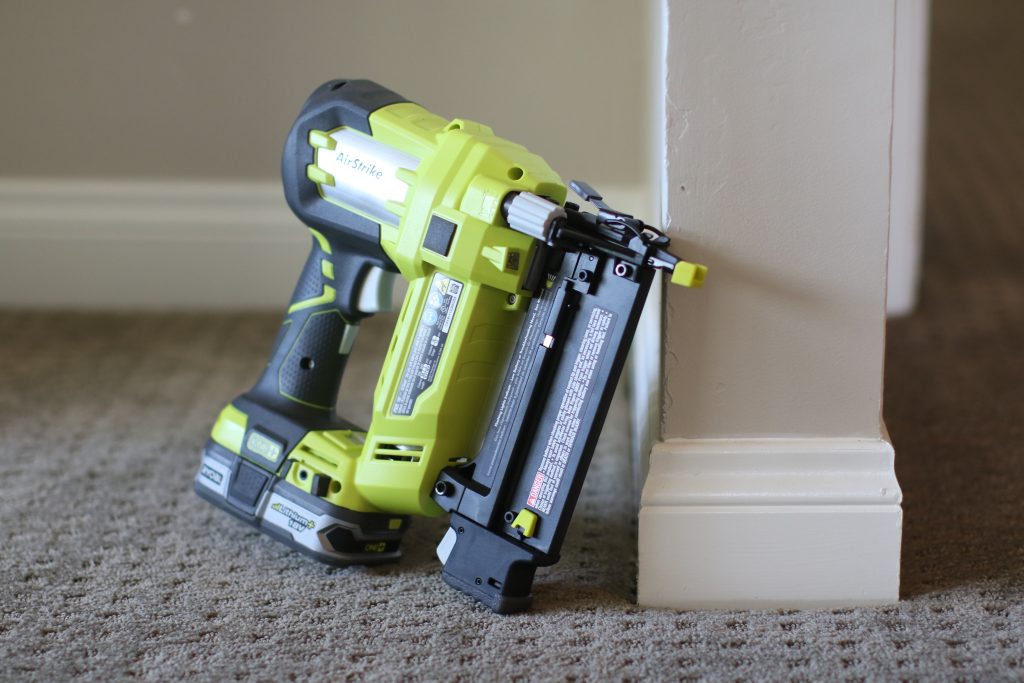
Angled vs Straight Finish Nailer: Price
The price of a finish nailer will depend on the type of finish nailer, brand, build quality, and construction materials. Overall, straight finish nailers tend to cost more than angled models due to their larger size and more power-demanding design. Additional features like a built-in flashlight can also increase the price of a finish nailer.
Frequently Asked Questions
How Are Angled and Straight Finish Nailers Similar?
There are many similarities between these nailers, which are both designed for finishing work. Angled and straight finish nailers use the same power sources and will allow users to adjust the nail depth for a cleaner, more professional finish.
How Do Angled and Straight Finish Nailers Differ?
Despite the similarities, there are even more differences between these finish nailers. Angled and straight finish nailers differ in terms of design, user-friendliness, weight, price, and compatibility with different nailing angled.
When Should You Use an Angled Finish Nailer?
You should opt for an angled finish nailer when you need to drive nails in tight spaces or at precise angled. An angled finish nailer can also be used for nailing in areas that are hard to reach with a straight finish nailer. The angled design means it can be harder to position the nail, which means an angled finish nailer requires more skill to be used properly.
When Should You Use a Straight Finish Nailer?
You can use a straight finish nailer for any finishing work that requires nails to be precisely driven into wooden materials. Always use a straight finish nailer when working on long, wide surfaces. You can also use this tool for framing, carpentry, and various home repairs.
Conclusion
Angled and straight finish nailers are both designed for finishing work, such as installing crown moldings or baseboards. While angled models can be used in tight spaces and corners, straight variants can be used on long surfaces. Straight models tend to be bulkier and more expensive. Angled finish nailers are more portable and have more versatile uses.
